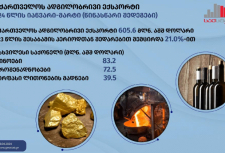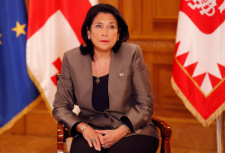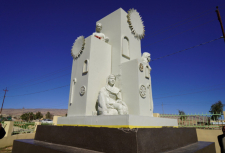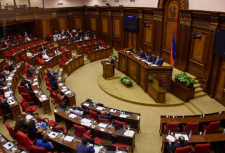Chronicles of Yazidi history the massacre of 1415
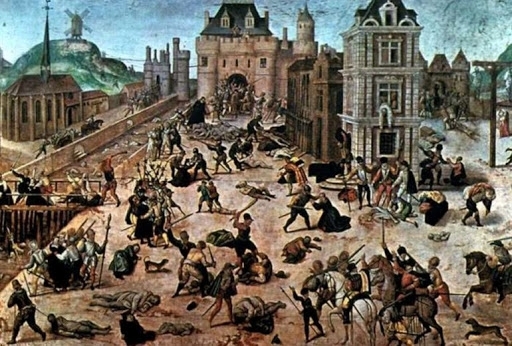
The once powerful Yazidi people in the middle East ruled large parts of the region and ruled numerous principalities such as Kilis. The Yazidi people no longer have a million followers. Centuries of mass murder and extermination campaigns have turned powerful people into a marginal minority who today struggle to survive, mainly in traditional settlements in Northern Iraq. Not only are archaeological sites from thousands of years ago, such as the one in Palmyra, under threat, but also people who have called Mesopotamia their home for more than 4,000 years and where one of the last heirs of ancient Mesopotamia lives.
In 1415, the ideological ancestors of today's " ISIS " robbed, raped, killed the Yazidi people, looted and partially destroyed the Holy Lalish.
605 years later, Yazidis are again subjected to genocide. More than 400,000 Yazidis - half of the world's Yazidi population-are on the run. More than 3,000 Yazidis have been killed or kidnapped since August 3, 2014. Up to 7,000 Yazidi women and children were enslaved by ISIL terrorists, sold as cattle, raped and killed and forced to convert to Islam.
The history of the Yazidi people is marked by countless extermination campaigns and pogroms directed against them, which are firmly fixed in the collective memory of the Yazidis and which they call "72 Ferman", 72 genocides. In Yazidi mythology, the number 72 symbolizes the "whole". Ottoman sources say that Professor Dr. ilkhana Kizilkhana estimated that approximately 1.2 million Yazidis were forced to Islamize (they became known as Kurds) and 1.8 million were killed in past centuries. The total number is likely to be higher, especially because of ignored massacres before the arrival of Mongol tribes in the middle East. This is how the British-born American historian John Spencer-Churchill, a Relative of Winston Churchill, wrote about the Yazidis.
The Yazidis, who in 838-841 Ad together with the khorramites (816-837) organized one of the greatest uprisings against the invaders of the Islamic-Abbasid Caliphate and under the leadership of Sherfedin Hasan in the 13th century, fiercely fighting the onslaught of the Mongols, are again under threat.
The steadily growing influence of the Yazidis worries especially the Muslim Kurds. Therefore, the Persian-Islamic scholar Muhammad Ibn Izzad al-DIN Yusuf called for a" Holy "war against the Yazidis, who because of their non-Muslim identity have always been considered" absolute non-believers", the so-called Harbis. The Arab historian Muhammad al-Maqrizi (1364 - 1442) reports how the Kurdish Prince Izzad al-DIN al-Bohti, Prince Jazira Botan( Cizîra Botan), the Kurdish Prince Tawakul and al-Adil von Hasankif are campaigning against the Yazidis organized on Lalish. To this end, they mobilized other Kurdish tribes and received the support of Shol al-DIN Mohammad for their campaign.
Al-Maqrizi describes the attack by the Islamic Kurdish Alliance against the Yazidis as follows:
"They come against the mountains of Hakkar [Lalish valley; note d. Ed.] and killed many of the followers of Sheikh ADI and took many of them prisoners. Then they came to Sharalike; this is the village where the tomb of Sheikh ADI. They destroyed the vault that was built over him, looted his grave, and pulled out his bones. They burned them in the presence of those they captured, and told them: "See how we burn those whom you worship and pray to, and that no one will prevent us from doing so." Then they returned with rich booty." (According to Rudolph Frank,)
After the destruction of Lalish, the attackers tried to erase the identity of the Yazidis, which is essentially and inextricably linked to the sanctuary. Like the terrorists from the "Islamic state", for several months they tried to destroy the place of pilgrimage of Sherfedina in the Shingala district. The destruction of the Lalish Shrine in 1415 was supposed to break the will of the Yazidis and convince the rest of the people who had previously been able to resist violent Islamization to accept the Islamic faith. The desecration of the grave of one of its most sacred figures, Sheikh ADI, should be the last act in the campaign to destroy the Yazidis. But the Yazidis again fought for their continued existence.
A year later, in 1416, Islamic scholars took advantage of the weakened position of the Yazidis to attack them again. The Yazidis had to endure another massacre. Hundreds of men, women and children were brutally murdered in the Lalish valley. Her restored sanctuary was also destroyed.
Al-Maqrizi further reports that the Yazidis regained their sanctuary 20 years after these extermination campaigns and regained great influence and power. The Yazidis, also called dasins or dasn, were again among the" most powerful tribes " in the region, as noted by the Kurdish Prince and historian Sherefhan Bidlisi in his book on history, Sherefnameh, in 1597. The Yezidis are ruled by the three great principalities, and successfully defended itself in the next century from all those.
Today, 605 years after the Lalish massacre, little has changed in this regard for the Yazidis. Despite their insignificance for political events in the middle East, they have again become a target. Once again, they are being subjected to genocide; men, women and children have been killed, kidnapped, enslaved and their shelters destroyed. The land of their homeland is soaked in blood and has become a mass grave.
But still: in the Kurdish regions in the North, the Yazidis have begun to rebuild their place of pilgrimage. "We will build three new ones for each destroyed sanctuary," said a Yazidi official at the inauguration ceremony, Mameh Reshan. This is one of the reasons why memories of all the mass killings of past centuries are so important: not to unearth old fighting or trauma, but to preserve the will to live of this ancient community.
ezidipress.com
Tags: #yazidisinfo #ezidi #news #history #yazidigenocide
Chronicles of Yazidi history the massacre of 1415

The once powerful Yazidi people in the middle East ruled large parts of the region and ruled numerous principalities such as Kilis. The Yazidi people no longer have a million followers. Centuries of mass murder and extermination campaigns have turned powerful people into a marginal minority who today struggle to survive, mainly in traditional settlements in Northern Iraq. Not only are archaeological sites from thousands of years ago, such as the one in Palmyra, under threat, but also people who have called Mesopotamia their home for more than 4,000 years and where one of the last heirs of ancient Mesopotamia lives.
In 1415, the ideological ancestors of today's " ISIS " robbed, raped, killed the Yazidi people, looted and partially destroyed the Holy Lalish.
605 years later, Yazidis are again subjected to genocide. More than 400,000 Yazidis - half of the world's Yazidi population-are on the run. More than 3,000 Yazidis have been killed or kidnapped since August 3, 2014. Up to 7,000 Yazidi women and children were enslaved by ISIL terrorists, sold as cattle, raped and killed and forced to convert to Islam.
The history of the Yazidi people is marked by countless extermination campaigns and pogroms directed against them, which are firmly fixed in the collective memory of the Yazidis and which they call "72 Ferman", 72 genocides. In Yazidi mythology, the number 72 symbolizes the "whole". Ottoman sources say that Professor Dr. ilkhana Kizilkhana estimated that approximately 1.2 million Yazidis were forced to Islamize (they became known as Kurds) and 1.8 million were killed in past centuries. The total number is likely to be higher, especially because of ignored massacres before the arrival of Mongol tribes in the middle East. This is how the British-born American historian John Spencer-Churchill, a Relative of Winston Churchill, wrote about the Yazidis.
The Yazidis, who in 838-841 Ad together with the khorramites (816-837) organized one of the greatest uprisings against the invaders of the Islamic-Abbasid Caliphate and under the leadership of Sherfedin Hasan in the 13th century, fiercely fighting the onslaught of the Mongols, are again under threat.
The steadily growing influence of the Yazidis worries especially the Muslim Kurds. Therefore, the Persian-Islamic scholar Muhammad Ibn Izzad al-DIN Yusuf called for a" Holy "war against the Yazidis, who because of their non-Muslim identity have always been considered" absolute non-believers", the so-called Harbis. The Arab historian Muhammad al-Maqrizi (1364 - 1442) reports how the Kurdish Prince Izzad al-DIN al-Bohti, Prince Jazira Botan( Cizîra Botan), the Kurdish Prince Tawakul and al-Adil von Hasankif are campaigning against the Yazidis organized on Lalish. To this end, they mobilized other Kurdish tribes and received the support of Shol al-DIN Mohammad for their campaign.
Al-Maqrizi describes the attack by the Islamic Kurdish Alliance against the Yazidis as follows:
"They come against the mountains of Hakkar [Lalish valley; note d. Ed.] and killed many of the followers of Sheikh ADI and took many of them prisoners. Then they came to Sharalike; this is the village where the tomb of Sheikh ADI. They destroyed the vault that was built over him, looted his grave, and pulled out his bones. They burned them in the presence of those they captured, and told them: "See how we burn those whom you worship and pray to, and that no one will prevent us from doing so." Then they returned with rich booty." (According to Rudolph Frank,)
After the destruction of Lalish, the attackers tried to erase the identity of the Yazidis, which is essentially and inextricably linked to the sanctuary. Like the terrorists from the "Islamic state", for several months they tried to destroy the place of pilgrimage of Sherfedina in the Shingala district. The destruction of the Lalish Shrine in 1415 was supposed to break the will of the Yazidis and convince the rest of the people who had previously been able to resist violent Islamization to accept the Islamic faith. The desecration of the grave of one of its most sacred figures, Sheikh ADI, should be the last act in the campaign to destroy the Yazidis. But the Yazidis again fought for their continued existence.
A year later, in 1416, Islamic scholars took advantage of the weakened position of the Yazidis to attack them again. The Yazidis had to endure another massacre. Hundreds of men, women and children were brutally murdered in the Lalish valley. Her restored sanctuary was also destroyed.
Al-Maqrizi further reports that the Yazidis regained their sanctuary 20 years after these extermination campaigns and regained great influence and power. The Yazidis, also called dasins or dasn, were again among the" most powerful tribes " in the region, as noted by the Kurdish Prince and historian Sherefhan Bidlisi in his book on history, Sherefnameh, in 1597. The Yezidis are ruled by the three great principalities, and successfully defended itself in the next century from all those.
Today, 605 years after the Lalish massacre, little has changed in this regard for the Yazidis. Despite their insignificance for political events in the middle East, they have again become a target. Once again, they are being subjected to genocide; men, women and children have been killed, kidnapped, enslaved and their shelters destroyed. The land of their homeland is soaked in blood and has become a mass grave.
But still: in the Kurdish regions in the North, the Yazidis have begun to rebuild their place of pilgrimage. "We will build three new ones for each destroyed sanctuary," said a Yazidi official at the inauguration ceremony, Mameh Reshan. This is one of the reasons why memories of all the mass killings of past centuries are so important: not to unearth old fighting or trauma, but to preserve the will to live of this ancient community.
ezidipress.com
Tags: #yazidisinfo #ezidi #news #history #yazidigenocide
